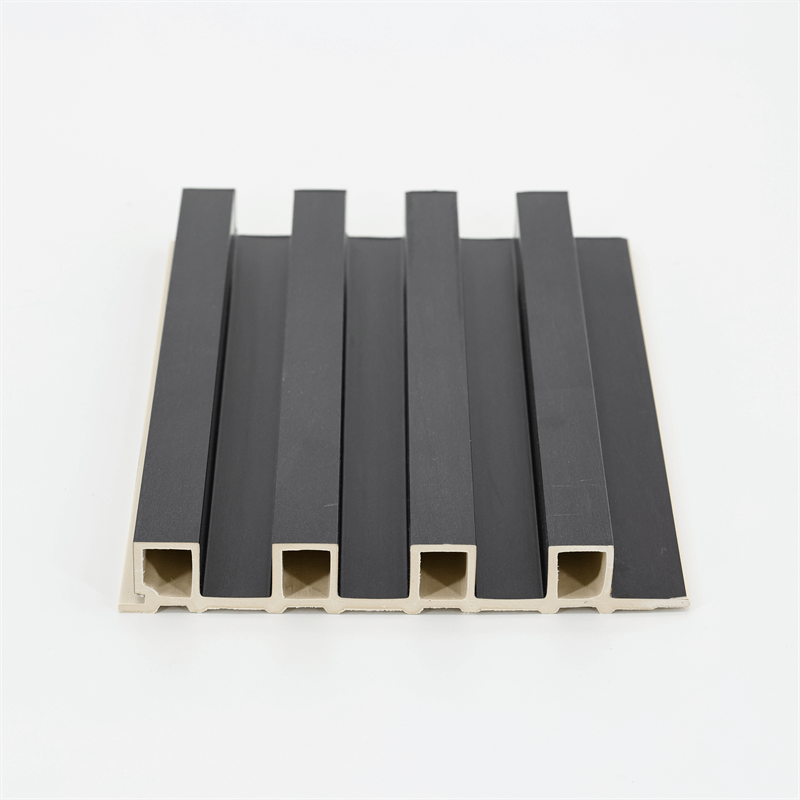
Wood-Plastic Composite (WPC) fluted panels have gained significant popularity in the
construction and design industries due to their unique combination of aesthetics and durability.
These panels offer a natural wood-like appearance while exhibiting exceptional strength and resistance to various environmental conditions.
In this article, we will delve into the numerous benefits of WPC fluted panels,
focusing on how they blend aesthetics and durability to provide a versatile and sustainable building material for a wide range of applications.
Introduction to WPC Fluted Panels
WPC fluted panels are composite materials that blend wood fibers or flour with thermoplastics like polyethylene, polypropylene, or PVC.
The mixture undergoes a heating and compression process, resulting in a robust and visually appealing panel.
The fluted design on the surface enhances its structural integrity, making it even more durable and lightweight.
Aesthetics: WPC fluted panels emulate the natural look of wood, offering warm and inviting aesthetics.
The fluted design adds a unique texture that resembles grooved wood, enhancing the visual appeal of the panels.
Weather Resistance: WPC fluted panels are highly resistant to environmental factors,
including moisture, UV radiation, and temperature fluctuations.
This makes them suitable for both indoor and outdoor applications.
Durability: The combination of wood fibers and thermoplastics imparts remarkable durability to WPC fluted panels.
They are resistant to wear, impact, and fading, ensuring long-lasting performance.
Sustainability: WPC fluted panels are eco-friendly,
as they incorporate recycled materials and have a lower carbon footprint compared to traditional wood products.

Enhancing Aesthetics with WPC Fluted Panels
One of the key benefits of WPC fluted panels is their ability to mimic the appearance of natural wood.
The panels exhibit the rich grains and textures characteristic of wood, adding warmth and character to interior and exterior spaces.
Whether used for wall cladding, ceiling panels, or furniture, WPC fluted panels can infuse a sense of nature into the design.
The aesthetics of WPC fluted panels make them a popular choice for various architectural styles, from traditional to contemporary.
Designers and architects can select from a range of colors and finishes to achieve their desired look,
ensuring a seamless integration with the overall design theme.
The fluted design on the surface of WPC panels sets them apart from conventional flat panels.
The flutes, or grooves, not only enhance the visual appeal but also contribute to the panels’ structural strength.
The textured surface creates interesting light and shadow effects, further adding to the panels’ dynamic appearance.
The interplay of light and shadow on the fluted surface adds depth and dimension to the panels,
making them visually captivating in different lighting conditions.
As a result, WPC fluted panels can serve as focal points in interior spaces, creating an eye-catching feature wall or ceiling.
Ensuring Durability with WPC Fluted Panels
WPC fluted panels are engineered to withstand harsh environmental conditions,
making them ideal for both indoor and outdoor applications.
The panels are highly resistant to moisture and water, preventing issues such as warping,
rotting, and decay, which are common concerns with natural wood products.
Their resistance to UV radiation ensures that the panels retain their color and appearance over time, even when exposed to direct sunlight.
This makes them suitable for outdoor applications such as wall cladding, decking, and facades,
where they can withstand the elements without losing their aesthetics or structural integrity.
The combination of wood fibers and thermoplastics in WPC fluted panels results in a robust and impact-resistant material.
The panels can withstand physical stress, making them less prone to damage from accidental impacts, scratches, or dents.
This characteristic is particularly advantageous in high-traffic areas, commercial spaces, and public buildings.
The wear resistance of WPC fluted panels ensures that they maintain their appearance and structural integrity even in heavily used spaces.
Unlike natural wood, they do not require frequent sanding or refinishing, reducing maintenance efforts and costs.

Sustainable Building Material
WPC fluted panels are an eco-friendly alternative to traditional wood products, as they utilize recycled wood fibers and thermoplastics.
By incorporating recycled materials, these panels contribute to reducing waste and conserving natural resources,
making them a sustainable choice for environmentally conscious projects.
The manufacturing process of WPC fluted panels requires less energy and emits fewer greenhouse gases compared to conventional wood products.
This reduced carbon footprint further enhances their eco-friendly profile, contributing to a greener and more sustainable construction industry.
WPC fluted panels offer an appealing combination of aesthetics and durability, making them a favored choice for architects, designers,
and homeowners seeking a versatile and sustainable building material.
Their ability to emulate the natural look of wood while providing exceptional weather resistance and
wear durability makes them suitable for a wide range of applications, both indoors and outdoors.
With the textured surface created by the fluted design, WPC fluted panels add a unique visual dimension to interior spaces, serving as a focal point in the design.
Their sustainable nature, derived from the use of recycled materials and a low carbon footprint, makes them a responsible choice for environmentally conscious projects.
As the demand for eco-friendly and aesthetically pleasing building materials continues to grow,
WPC fluted panels are expected to remain at the forefront of innovative and sustainable construction solutions.
